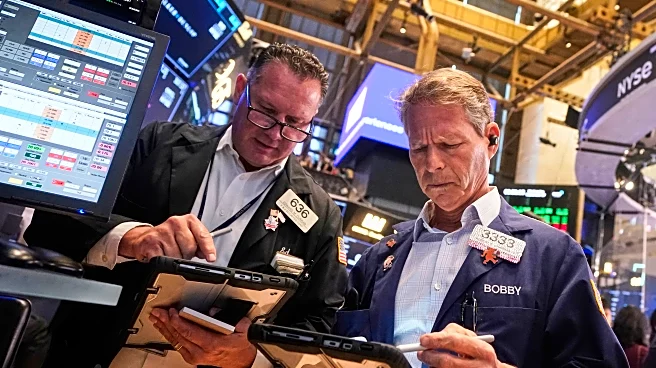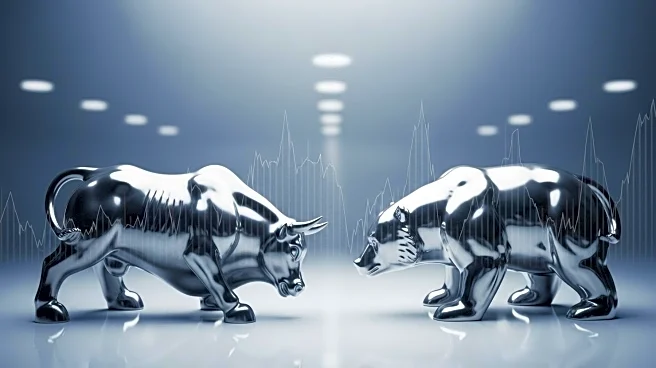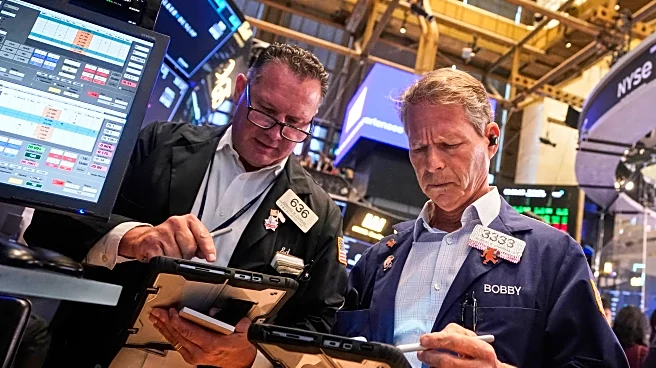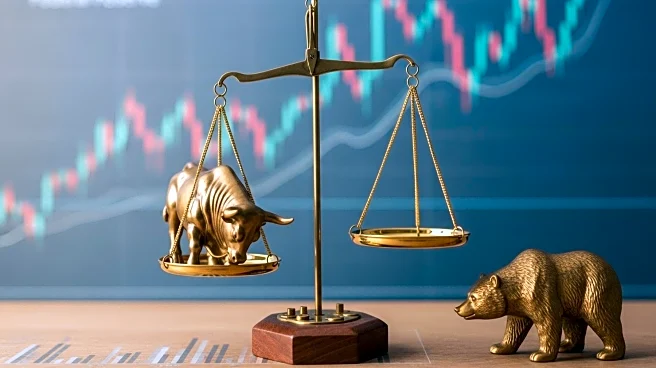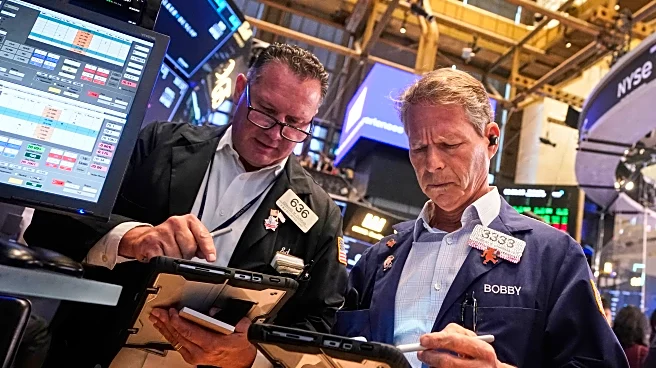What's Happening?
Wall Street experienced a turbulent 48 hours as U.S. stocks fell for a third consecutive session. The Dow Jones, S&P 500, and Nasdaq all saw declines, driven by profit-taking and concerns over stretched equity valuations. This market volatility was exacerbated by President Trump's announcement of new tariffs, including 100% duties on imported branded pharmaceuticals and significant tariffs on heavy trucks and furniture. These developments, coupled with strong economic data such as a drop in jobless claims and a GDP growth revision, have led to uncertainty about the Federal Reserve's future rate cuts.
Why It's Important?
The recent market fluctuations highlight the delicate balance between economic growth and monetary policy. Strong economic indicators, while positive, have dampened hopes for aggressive Fed rate cuts, which investors had anticipated. The introduction of new tariffs by President Trump adds another layer of complexity, potentially impacting global trade relations and increasing costs for consumers and businesses. These factors contribute to a challenging environment for investors, who must navigate the interplay between economic fundamentals and policy decisions.
What's Next?
Investors and market analysts will closely monitor upcoming economic data, including the Fed's preferred inflation gauge and the September jobs report, to gauge the central bank's next moves. The potential for further rate cuts remains a topic of debate, with some experts suggesting that the Fed may need to adjust its approach in response to evolving economic conditions. Additionally, the impact of the new tariffs on international trade and domestic industries will be scrutinized, as stakeholders assess the broader implications for the U.S. economy.
Beyond the Headlines
The recent developments underscore the ongoing tension between economic growth and policy interventions. The introduction of tariffs reflects a protectionist stance that could have long-term implications for global trade dynamics. Moreover, the market's reaction to strong economic data suggests a complex relationship between growth indicators and investor sentiment, where positive news can paradoxically lead to market downturns due to fears of reduced monetary support. This environment requires careful navigation by policymakers and investors alike.

